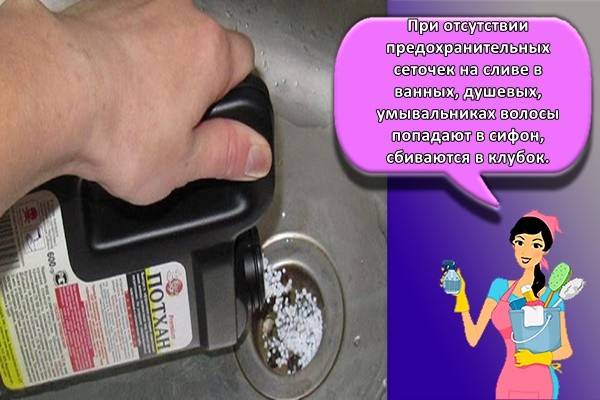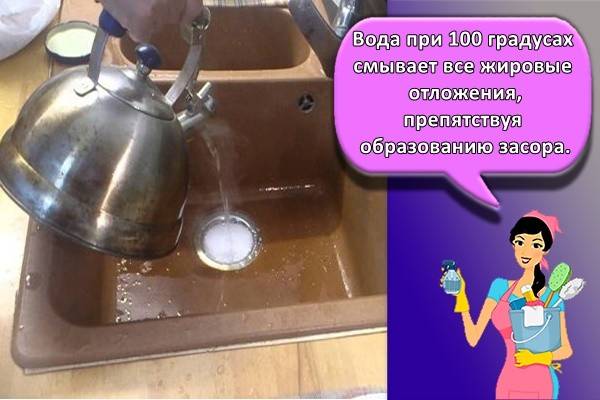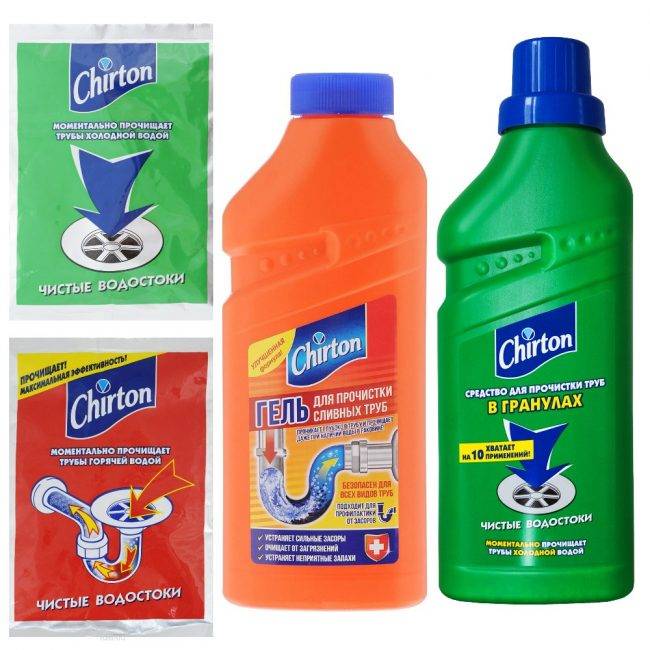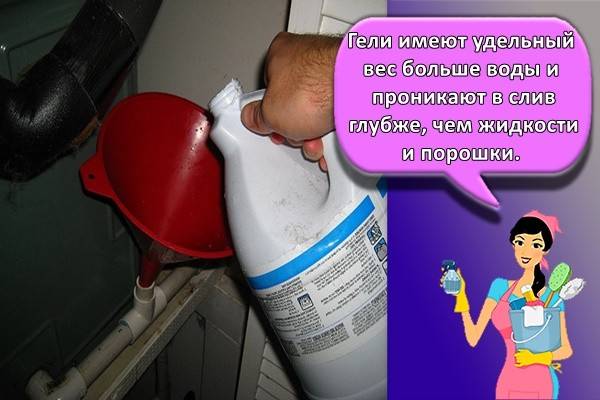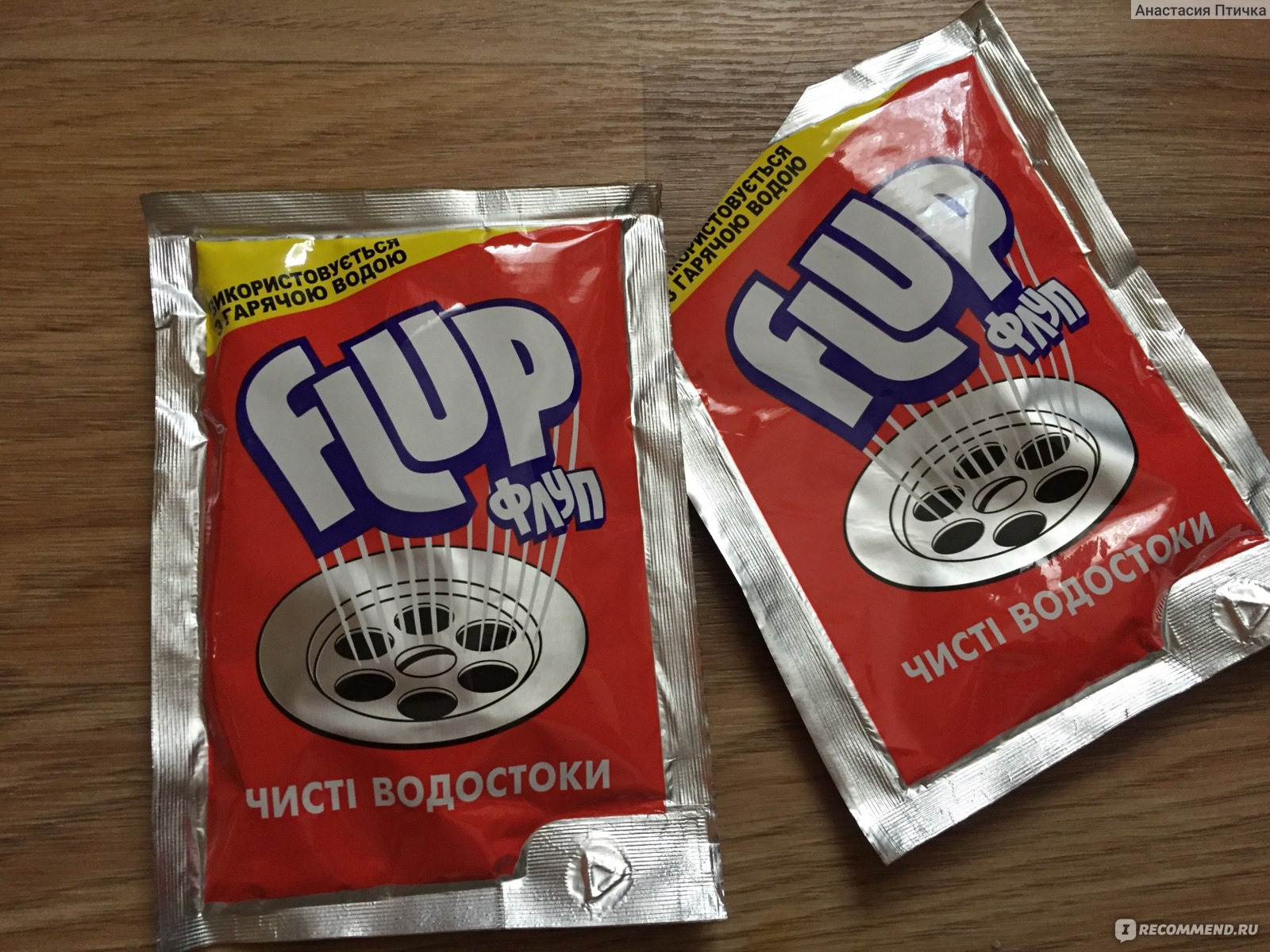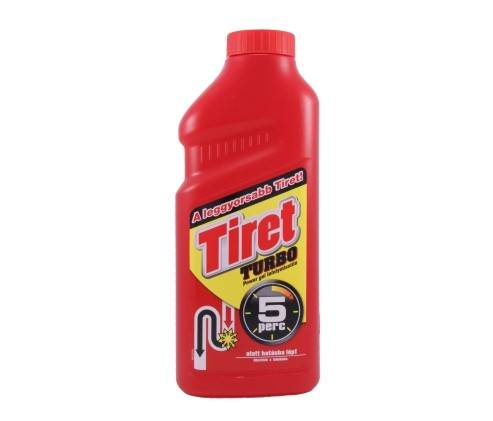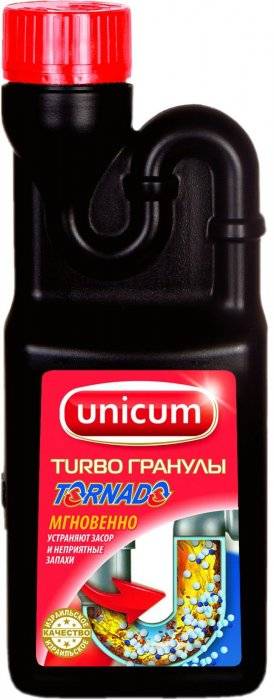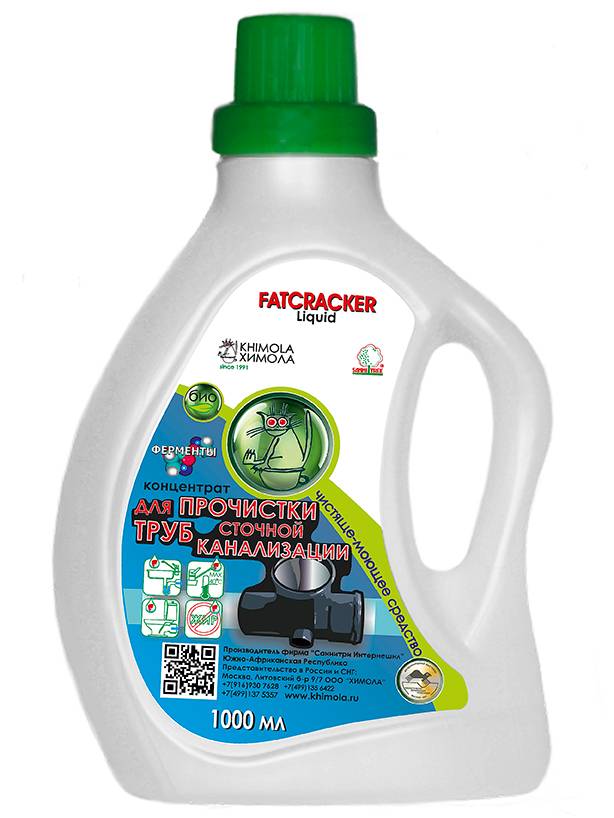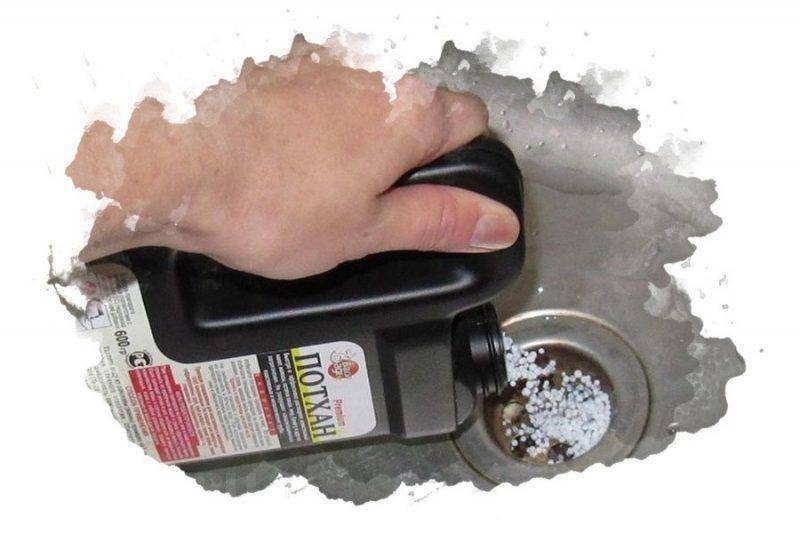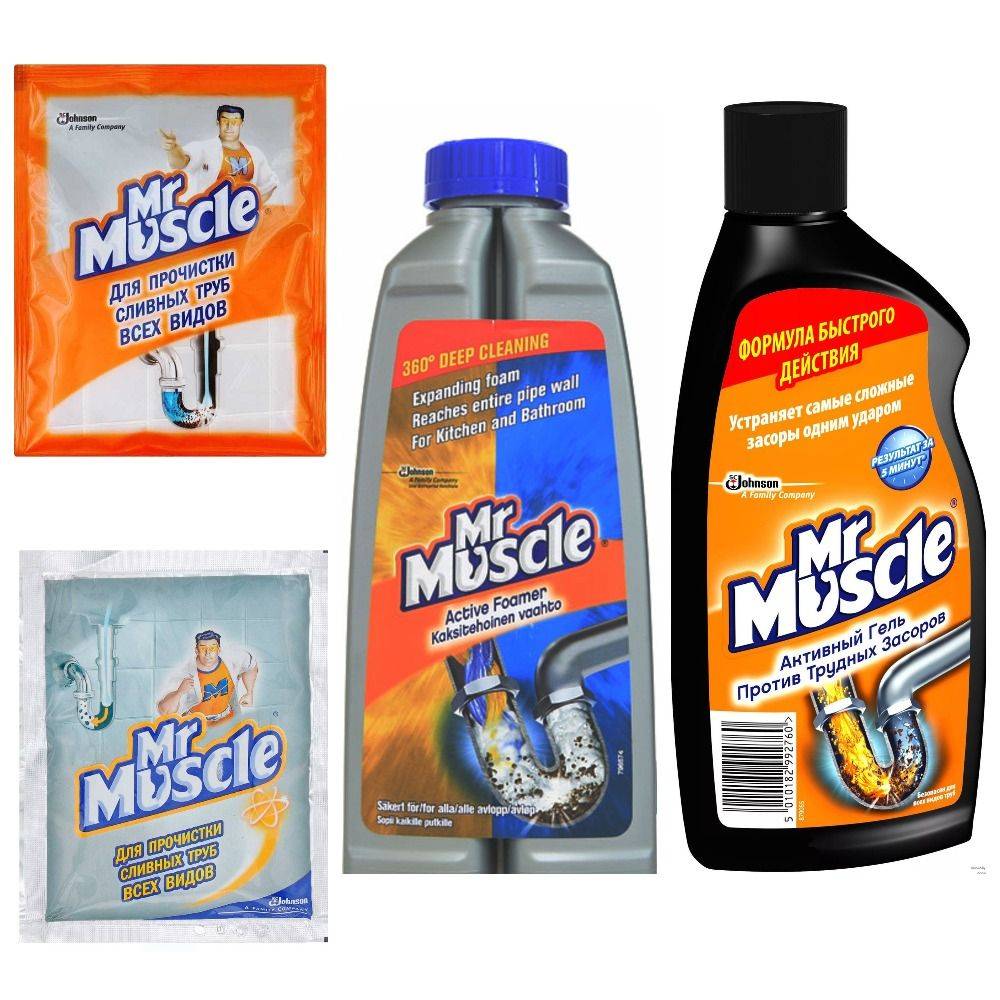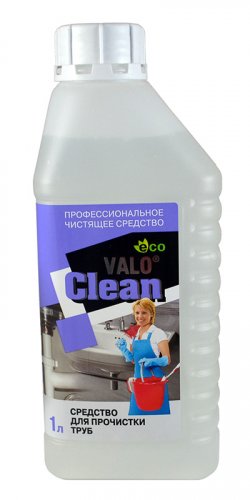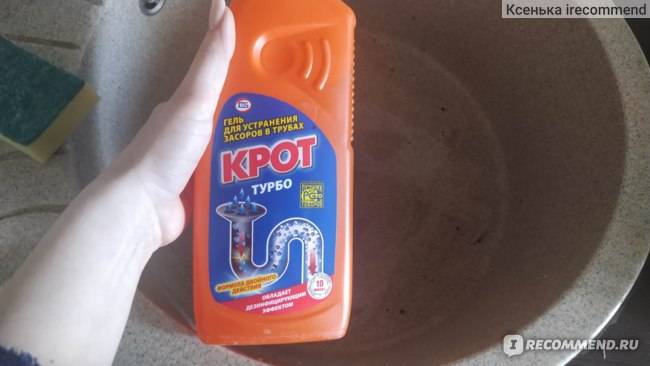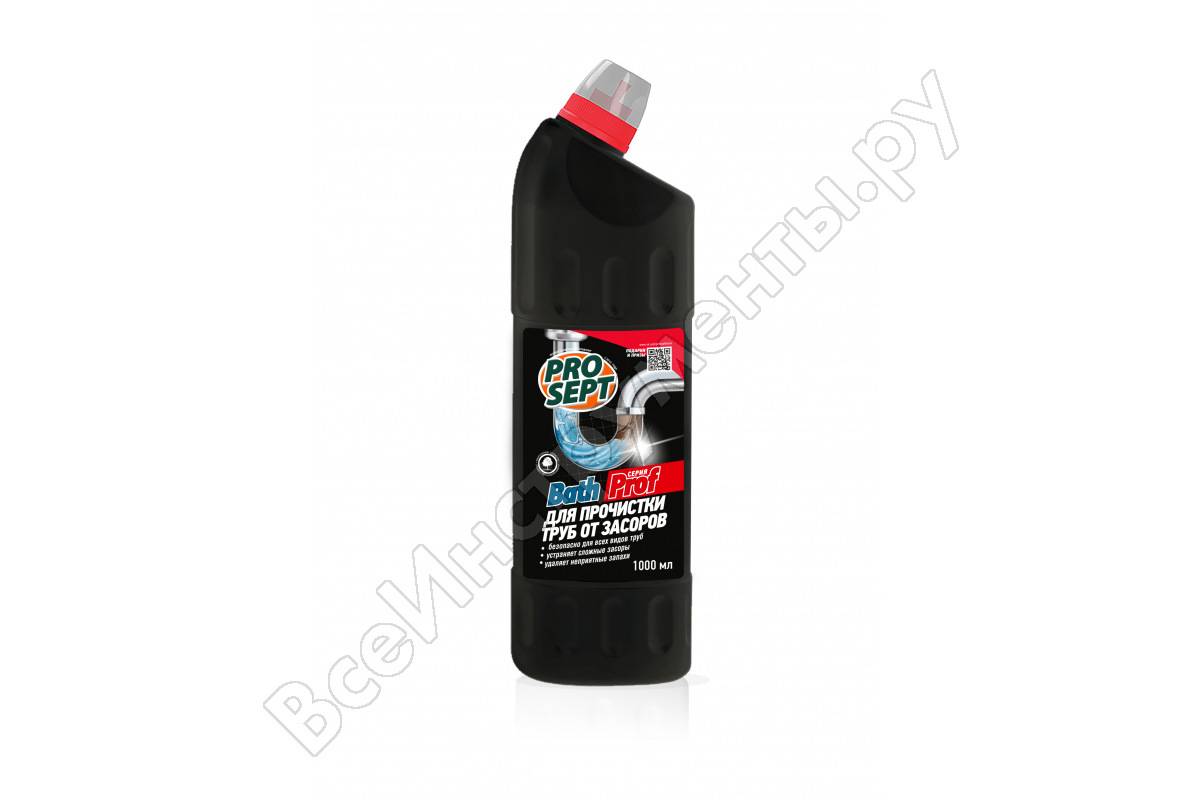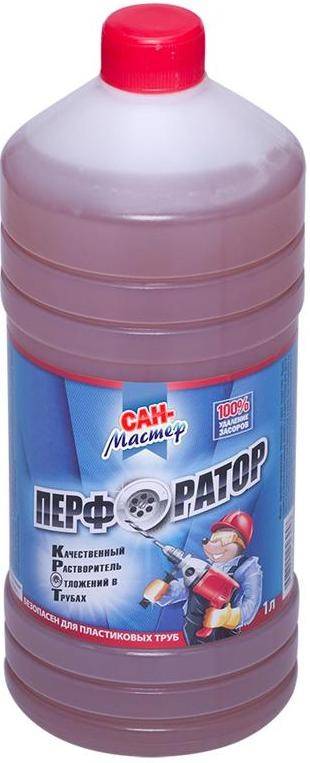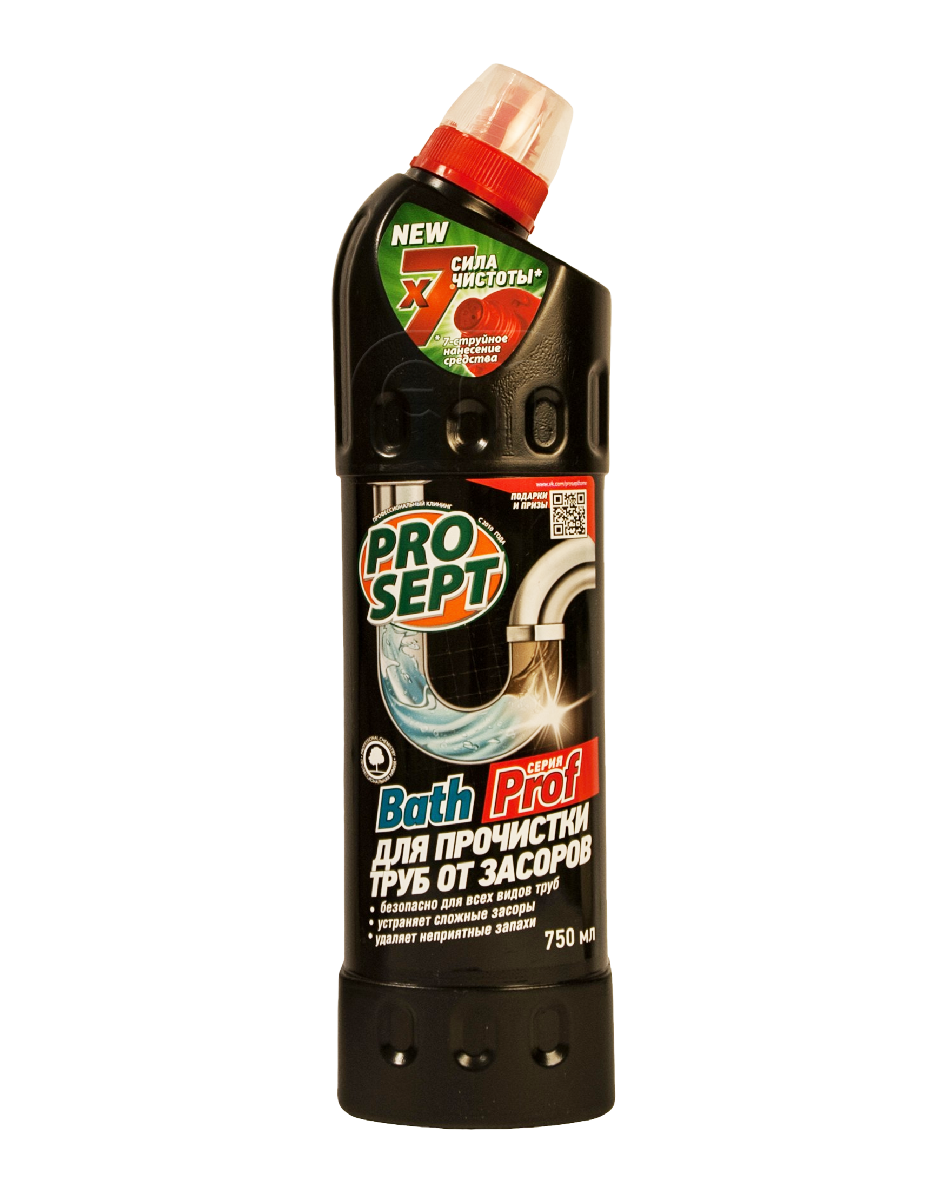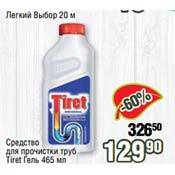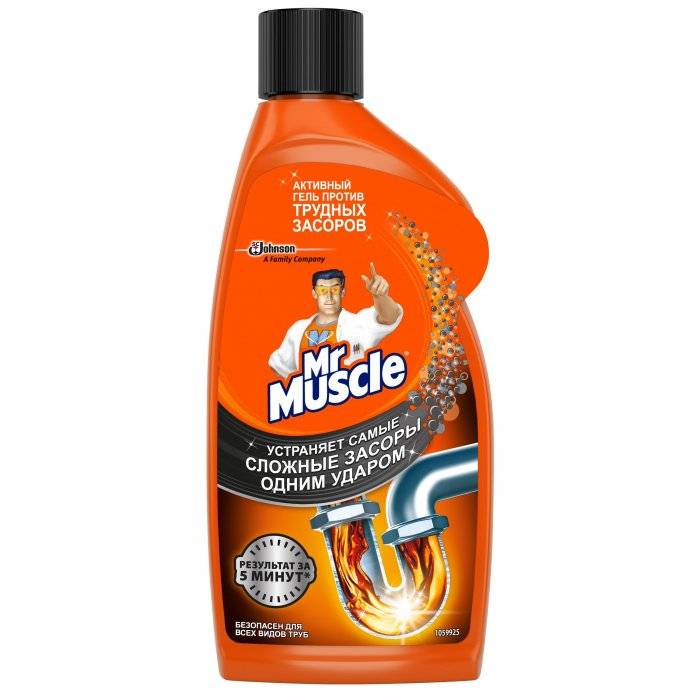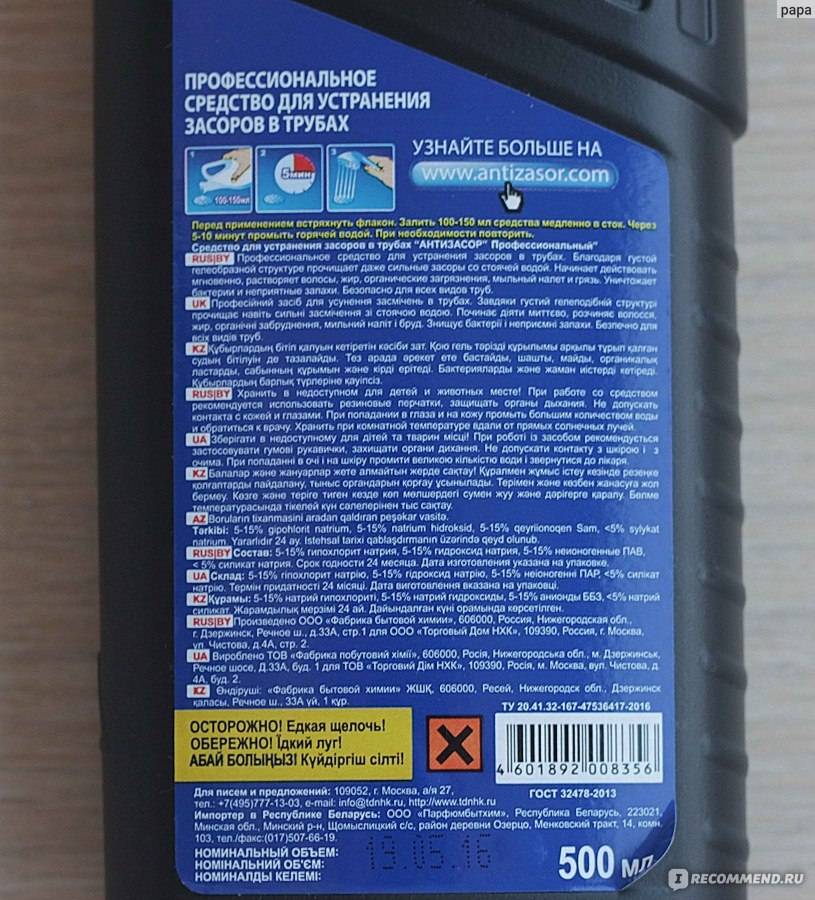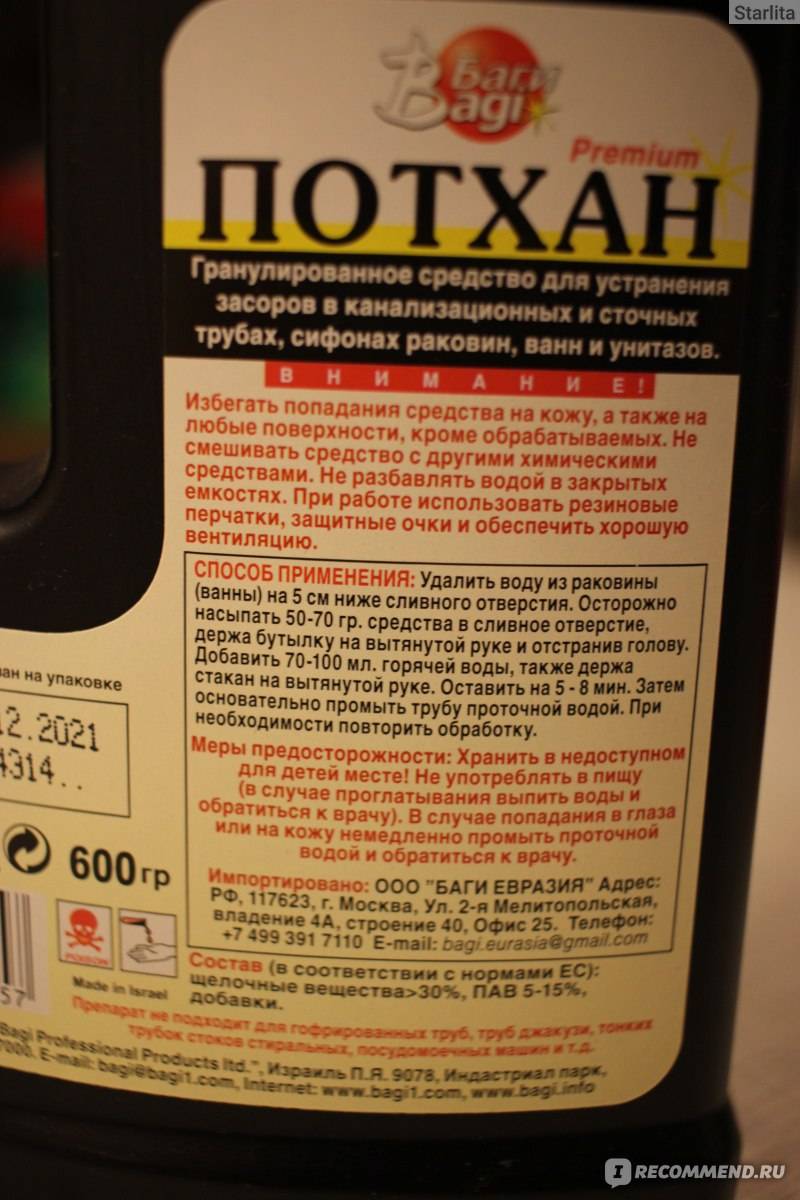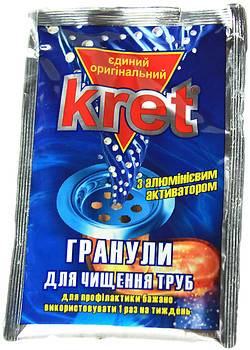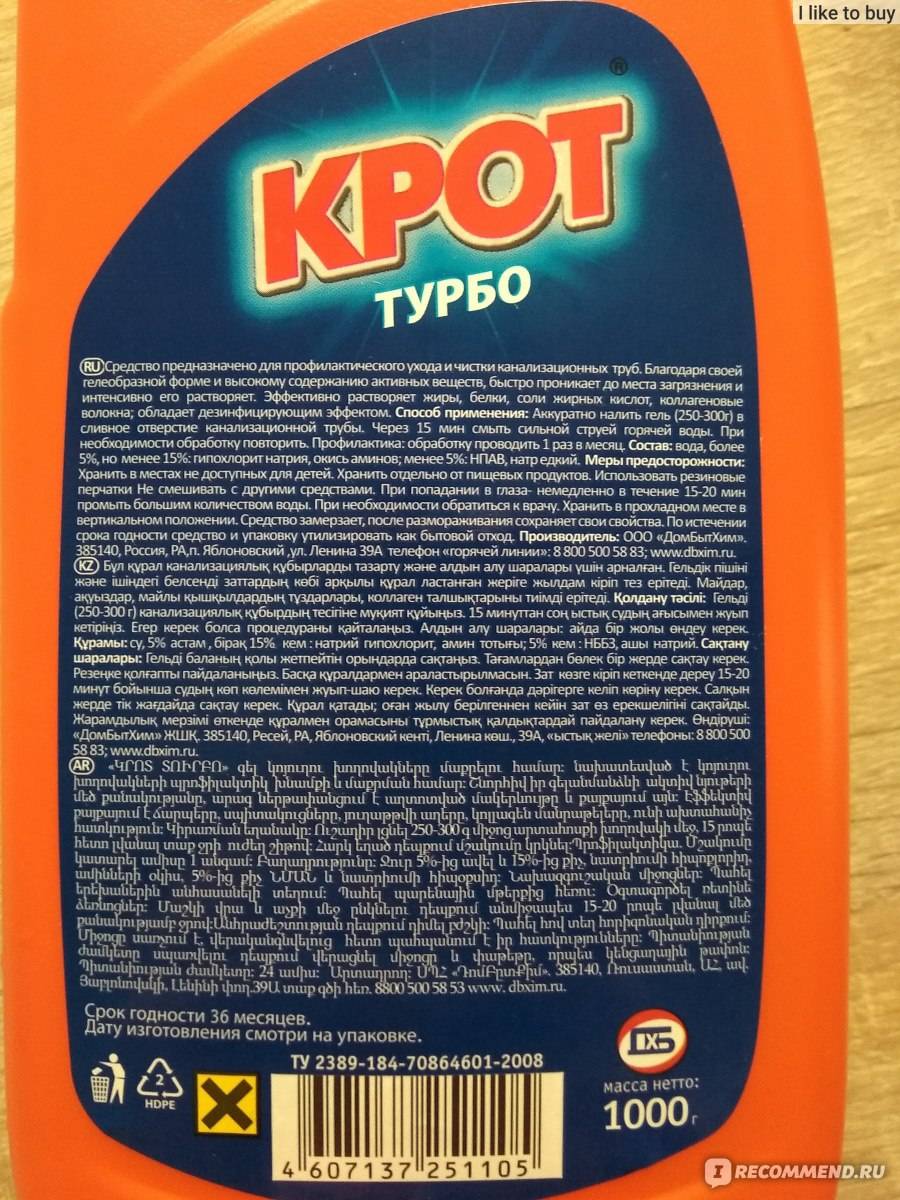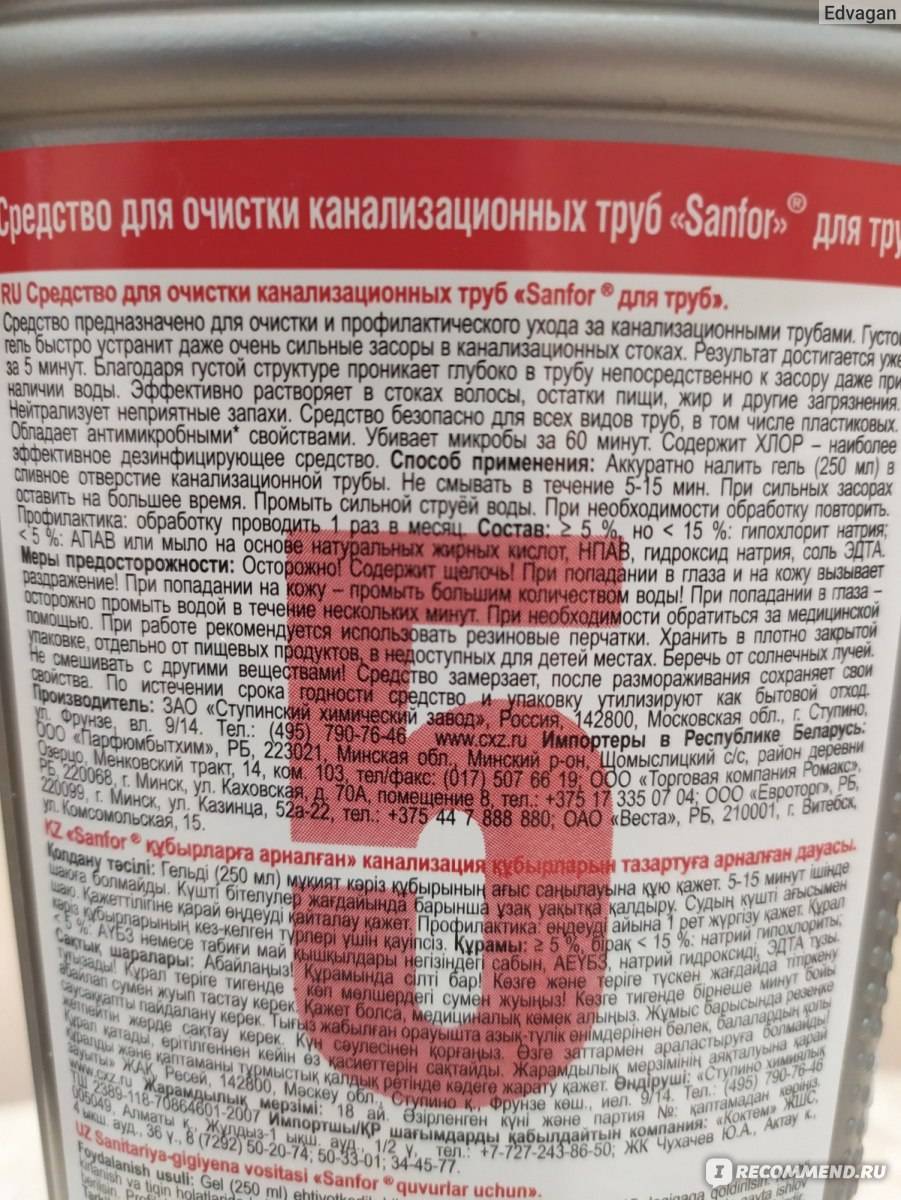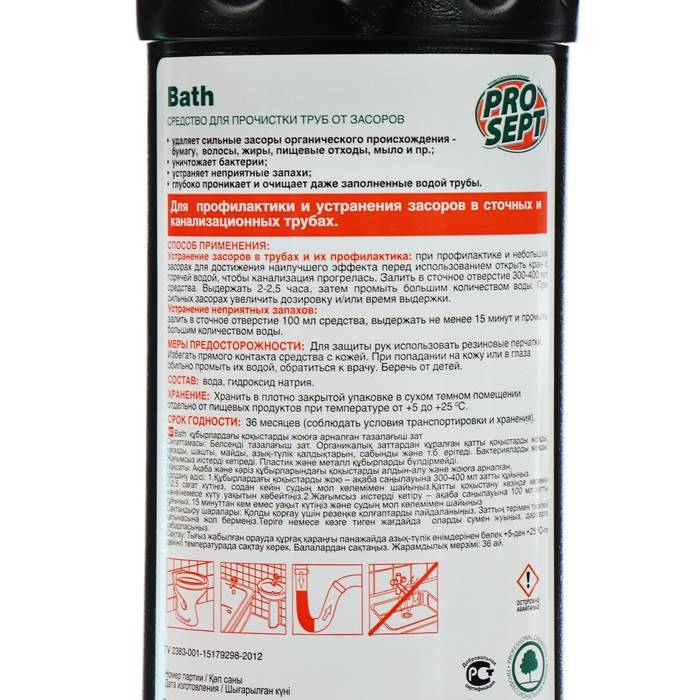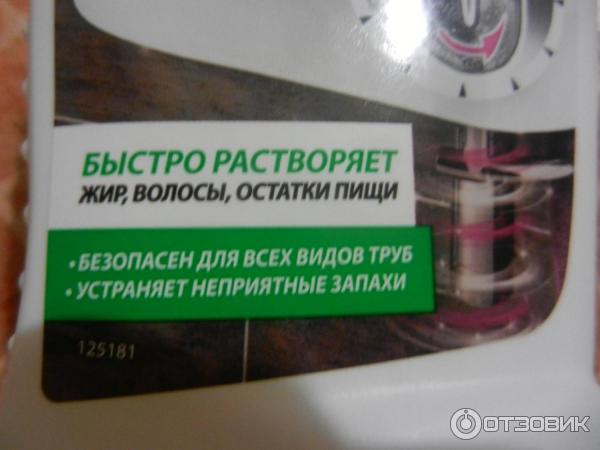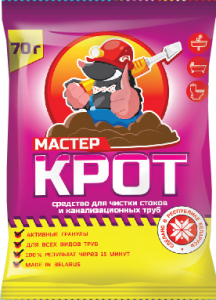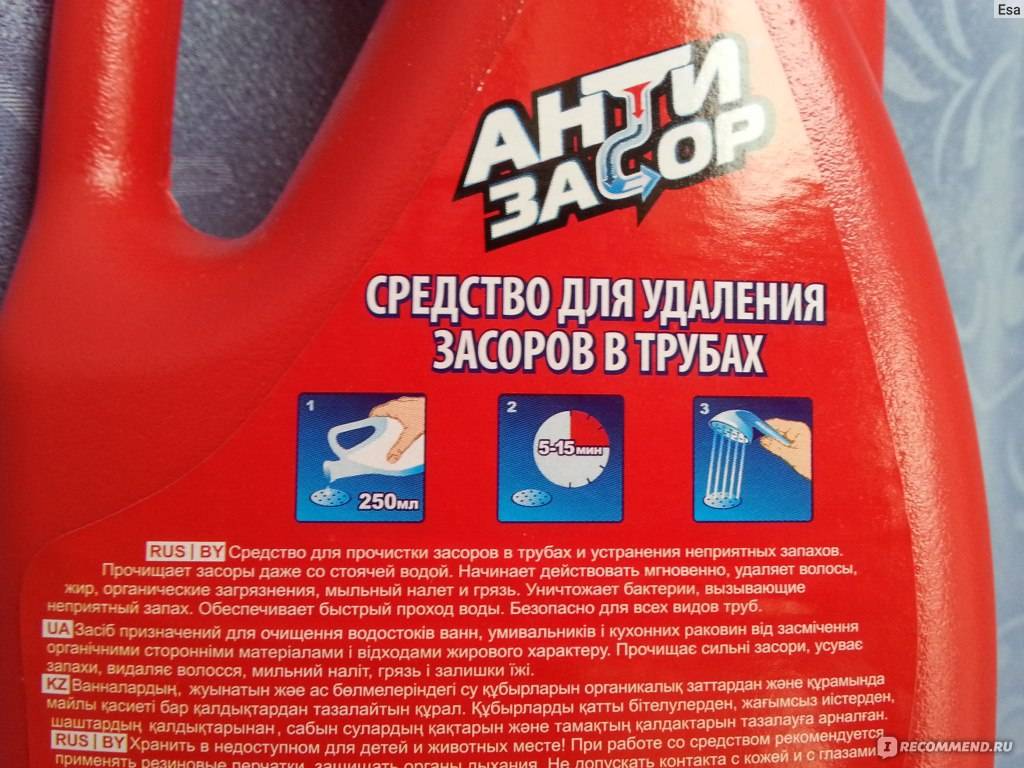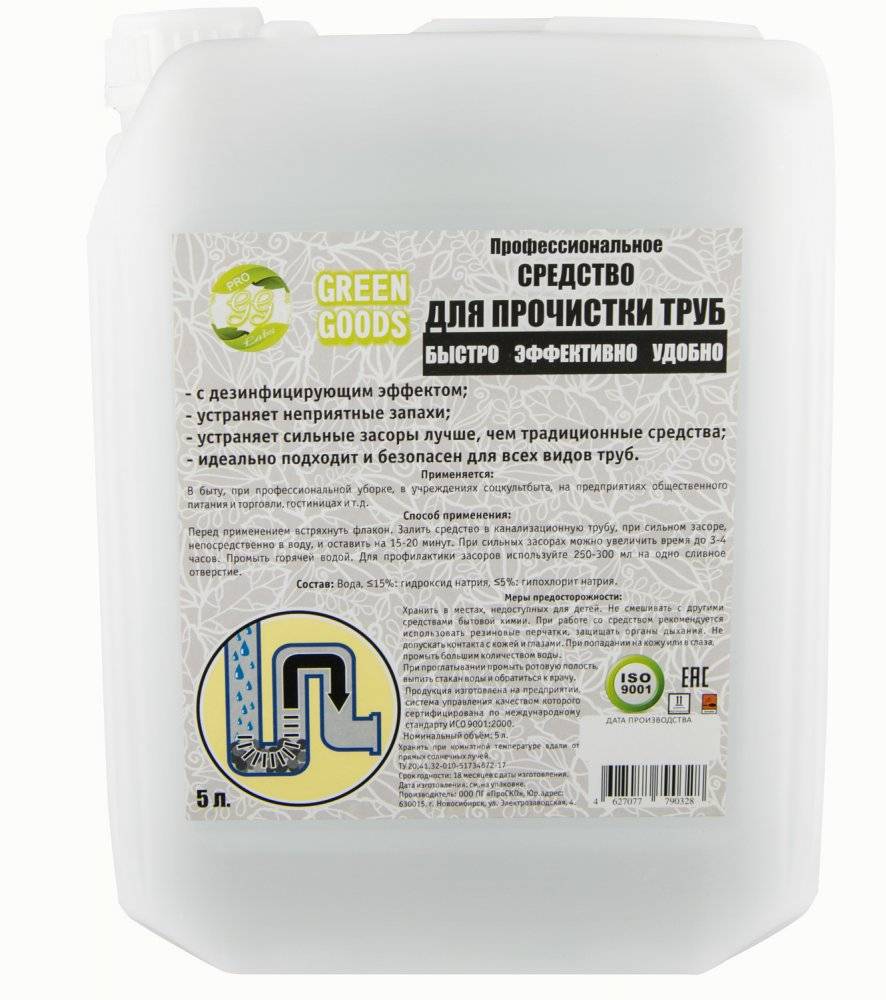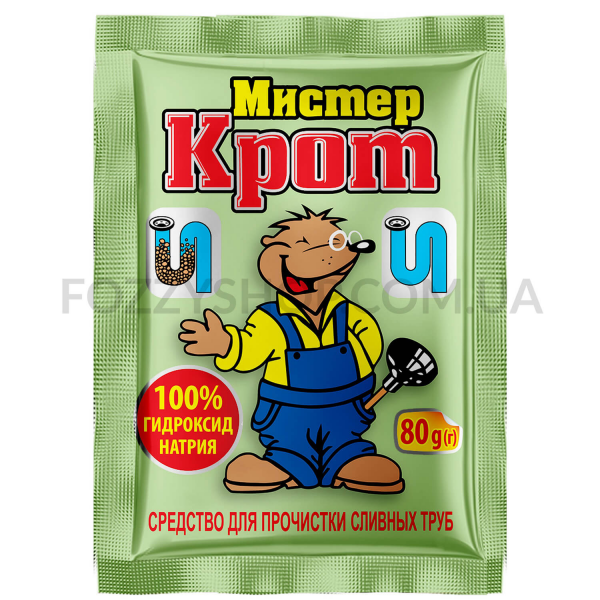Baking soda is an effective anti-blockage aid
Sodium bicarbonate, or baking soda, is widely used in cooking as a baking powder. On contact with acids, this substance gives off a lot of foam. Soda has an alkaline reaction, which allows it to quite effectively fight grease and impurities. Many housewives use it for cleaning dishes, stoves, cleaning and other operations.
In the fight against blockages, the ability of soda to saponify fats is used due to the reaction of alkaline hydrolysis. There are several ways to implement this reaction, which should be considered in more detail.
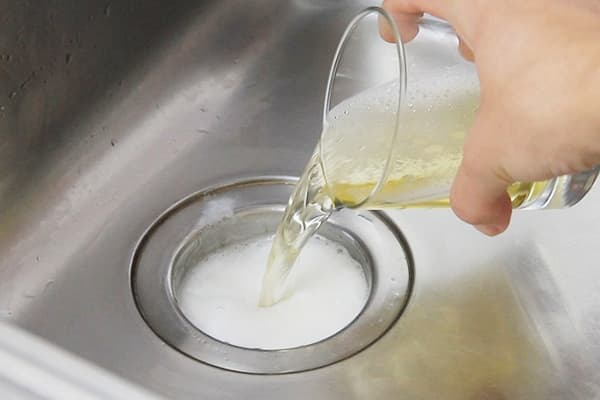
Soda and vinegar based formulations
The interaction of soda with acetic acid is accompanied by a violent release of carbon dioxide. The gas pressure drives the foam into the cork, where the soda breaks down deeper and deeper layers. All this effectively destroys the blockage, which allows you to cope even with old fat deposits.
The practical use of a combination of soda and vinegar is done in several ways:
- Half a pack of soda is poured into the pipe, and then 100 ml of vinegar is poured into the drain. The hole must be plugged immediately with a plug. Firstly, it will not allow caustic vapors to enter the room, and secondly, it will not allow the loss of gas pressure, directing it completely to destroy the blockage. When the reaction stops (this can be understood by the cessation of hissing, it usually takes about half an hour), the drain is flushed with hot water. After passing 2-3 liters of water through the pipe, the blockage will be completely destroyed and removed from the system.
- Vinegar and soda (100 ml of acid and 100 g of powder) are mixed in a glass or clay container. After the appearance of foam, the mixture is immediately sent to the drain hole, which is then closed with a stopper. The pipe is washed after an hour and a half, this time is usually enough to dissolve fat deposits.
Breaking up blockages with a mixture of baking soda and vinegar can be considered an effective and inexpensive way to solve the problem. Its only drawback is the risk of burning mucous membranes with acetic acid vapors. To reduce the danger to a minimum, follow the technology and do not neglect the safety precautions.
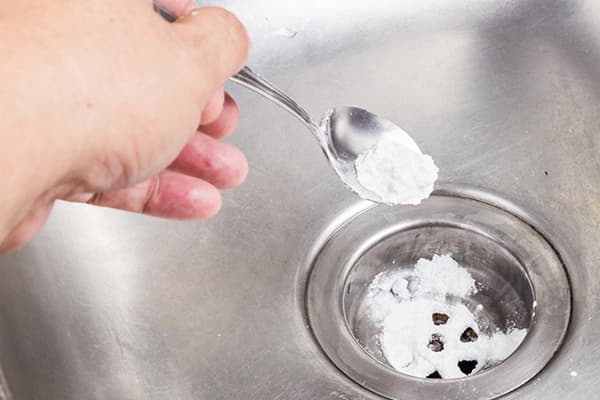
A mixture of baking soda and table salt
Coarse table salt has a good abrasive effect. It increases the effectiveness of the use of soda in the fight against blockages in the sewer system. In practice, these substances are used as follows:
- Soda and coarse salt in a ratio of about 2: 3 (200 g of soda and 350 g of salt) are poured into the drain. Everything is filled with hot water (0.3–0.5 l). Then you need to wait 20 minutes. During this time, the soda will chemically dissolve the fat. To remove the blockage, the drain is thoroughly flushed with a large volume of hot water. To enhance the effect, the procedure is repeated 2-3 times or a plunger is used.
- Salt and soda in equal amounts (200 g each) are poured into the drain hole of the sink and 10 ml of acetic acid are poured. Since caustic vapors are generated during the reaction, the drain must be carefully plugged. After an hour's exposure, the drain is rinsed with hot water.
The use of table salt allows you to increase the efficiency of using baking soda and eliminate the use of vinegar. However, such a composition will only cope with small and relatively fresh corks. If the deposits were formed for a long time, are thick or located far from the drain hole, the effectiveness of the method decreases.

Chemicals for cleaning sewer pipes: which is better
To begin with, consider what chemically active substances for cleaning sewer pipes are. Depending on the form of release, drugs are distinguished:
- Loose (powder or granules). They are usually packaged in foil bags for 1 use.
- Liquid or gel.These are safer remedies. Their adverse effect on pipes is minimal as they wash out well.
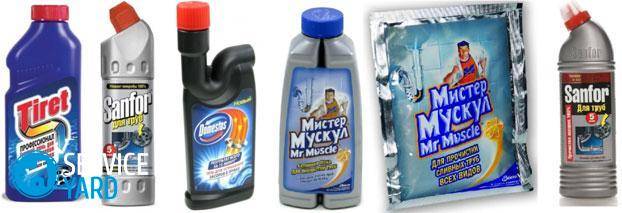 Depending on the type, chemically active substance, there are means:
Depending on the type, chemically active substance, there are means:
- Alkaline. They dissolve fat well, therefore they are excellent for use in kitchens.
- Acidic. It is advisable to use them in bathrooms, as acids dissolve hair and soap deposits well.
Varieties of funds
Pipe cleaners are available in a variety of forms. These are gel formulations, liquid preparations and powders. Moreover, each consistency has its own advantages.
Dry pipe blockage agent is very compact. From the store, you will carry a small bag, not a bulky bottle.
The most economical home remedy for blockages in pipes is a gel-like substance. Having a specific structure, it spreads perfectly along the walls of the sewer pipe, while dissolving deposits.
To eliminate an emergency situation of increased complexity in the plumbing equipment (for example, if the pipe is completely blocked by a grease plug), the best option would be to use a liquid for cleaning the sewage system. A substance of this consistency directly gets to the place of blockage and performs the task in the most efficient way.
Before purchasing the drug, you need to find out the cause of blockages. Without doing this, you risk throwing your money down the drain.

Clogs in the bathroom and in the kitchen are not caused by the same reasons, so the means should be different in each case.
Lemon juice: natural and safe
Lemon juice is acidic. The citric acid contained in it is capable of dissolving fatty deposits (acid hydrolysis of fats). At the same time, lemon juice, unlike acetic acid, does not form volatile corrosive vapors, which means it is not capable of damaging the mucous membranes of the lungs and eyes. True, citric acid is dangerous for the skin of the hands if it has cracks, scratches, burrs, etc. In this case, it is worth working with gloves.
Juice from 4-5 lemons is squeezed into a cup and then poured into the sink drain... To prevent the acid concentration at the site of exposure from dropping, refrain from using the sink for 1–1.5 hours. Then flush the drain with hot water. Repeat the procedure 2-3 times if necessary.
Using lemon juice is safer than using vinegar. However, the effectiveness of this method is somewhat lower, especially considering the high cost of the components. The use of dry citric acid will help increase the effectiveness. Lemon juice can also be used in place of acetic acid in baking soda-based formulations.
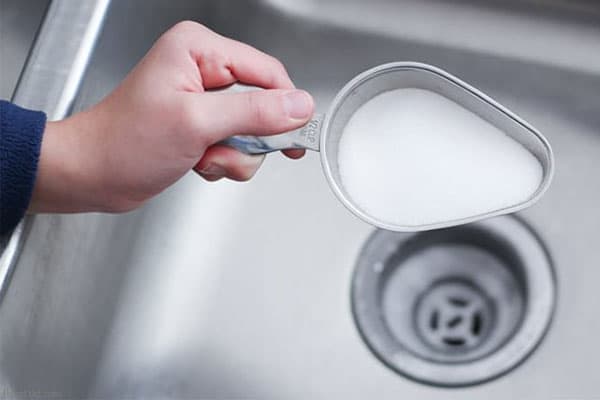
How safe is it for pipes
Recently, cast-iron sewer pipes have been installed less and less, plastic water supply and sewerage are widely used. Manufacturers of pipe blockages are aware of these trends and are developing formulations so that they do not damage the plastic. Of all the above compositions, only Flup in some cases dissolves plastic parts (siphon glasses or corrugated hoses), with other brands of similar troubles do not happen. Although, it is possible that the destruction of plastic occurs with an increase in the recommended exposure period (for Flup, this is 15 minutes).
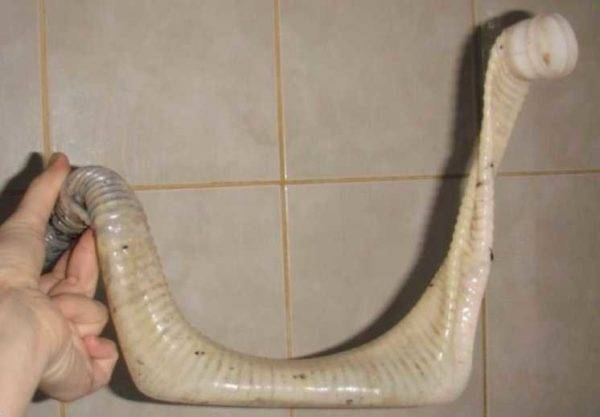
Sometimes, after using chemistry to clean the sewer, it happens like this
To keep the elements of your sewer system safe, follow the manufacturer's recommendations. If after the first treatment the plug has not gone away, you can try to do the same a second time, and then, if there is no manufacturer's prohibition. Sometimes the blockage in the pipe does not dissolve because it is far away in the pipe. Then you need to either use a cable, or try to "push" the active substance further. To do this, after pouring the product into the pipes, take a plunger and “pump” the contents several times.During the "pumping" we focus on pushing further (press the pear down more sharply).
We wash the pipes with boiling water
The easiest way to implement it yourself. All you need to remove the plug is hot water or boiling water.
The procedure looks like this:
- We open the tap and fill the sink (or bathtub) with hot water. Its temperature is about + 70 ° С. This is enough to dissolve the fat. But you can also prepare boiling water by boiling water in a saucepan or kettle.
- We close the tap. We wait until the water completely goes into the drain hole.
- We repeat the procedure several times. You can understand that the result has been obtained by the rate of water leaving: when the blockage breaks down, the sink will empty freely.
The method has many disadvantages:
- First of all, its effectiveness is maximized with recent clogging. But if the cork has formed a long time ago, having had time to dry thoroughly, boiling water will not be able to dissolve it.
- Another drawback is the high consumption of hot water (which will affect utility bills).
- The method is recommended only for metal pipes. Plastic pipes, as well as siphons, corrugations, gaskets from boiling water can lose their tightness.
Flushing the pipes with hot water is easy and does a good job of removing fresh blockages. But still, this folk method can hardly be called a means of effectively dealing with traffic jams in the sewage system: it is, rather, preventive.
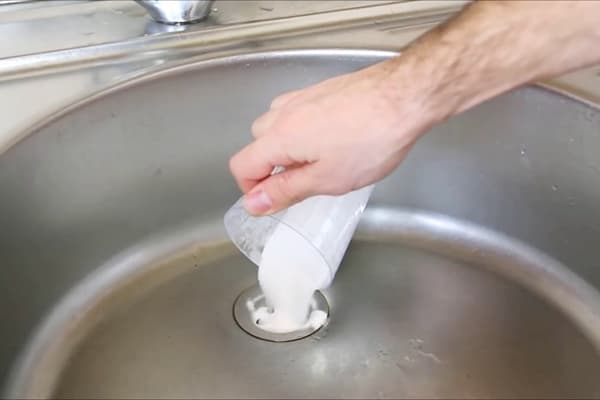
Advantages and Disadvantages of Home Remedies
Do-it-yourself pipe cleaning solutions have many advantages over factory-made products:
- For the preparation of homemade formulations, inexpensive components are used that are always at hand. This is especially true if you have to deal with the blockage far from civilization (for example, in the country).
- The cost of factory products can exceed the cost of components for a homemade composition by an order of magnitude.
- Commercially manufactured products are highly toxic and chemical aggressive, which makes them dangerous during storage.
At the same time, the effectiveness of homemade formulations, at best, approaches the effectiveness of factory products. Therefore, DIY solutions should be used to combat small blockages, as well as as a preventive measure.
Subject to the technology of use and application in their niche, homemade products show a fairly high efficiency, and the low cost of components often makes them the best choice for solving the problem of blockages.
Requirements for means for dissolving blockages
A certain set of requirements is imposed on any composition for cleaning the sewage system. If an industrially produced product does not correspond to them, it will not be allowed for sale. There are no such strict restrictions for a homemade solution, but it is advisable not to ignore them. We will use these criteria when evaluating the effectiveness of the formulations being disassembled.
Here are the requirements for means for dissolving blockages in sewer pipes:
- Efficiency. The ideal composition is to remove blockages anywhere in the sewer system. Real formulations rarely achieve this efficiency, with certain limits of applicability. Expanding the scope requires the introduction of potent substances into the composition, which is not always possible and justified.
- Health safety. It is advisable that the product does not burn the skin of the hands and mucous membranes. Unfortunately, this requirement directly contradicts efficiency. Therefore, it is recommended to wear protective gloves when using many recipes.
- Safety for the materials from which the pipes are made. This criterion sounds quite harsh: the composition used should not destroy the cast iron and polymers from which the pipes of the sewer system are made.
- Availability and low price.The less frequent the components are and the more expensive they are, the worse the product will meet this criterion of effectiveness. It is for this indicator that homemade formulations often outperform gels, powders and solutions made in a factory way.
- Ease of use. The composition should not require long exposure or use according to a complex algorithm. In addition, the ideal tool should "forgive mistakes" in use, that is, remain effective if the instructions are not followed closely enough.
Having decided on the principle of operation of homemade pipe cleaning compounds and formulating criteria for assessing their effectiveness, we will move on to analyzing ways to deal with blockages that have passed the test of time.

Why are the pipes clogged and what to do about it?
Before discussing folk recipes for compositions for cleaning sewer pipes, you need to figure out how the sewer system works. This will help you understand the causes of blockages, as well as find out how you can dissolve the resulting plug. Of course, there are significant differences in the design of the sewer system in different buildings, but the general principle is the same everywhere.
- Main riser. This is a vertically installed pipe of large diameter, through which the drains are carried out of the apartment. It rarely clogs. It should be said right away that if the riser is clogged, folk remedies cannot be dispensed with.
- Sun beds. These are horizontally located pipes connecting the kitchen sink, bath, toilet and other plumbing fixtures to the riser. In loungers, blockages most often occur at the joints with the riser or siphons.
Except when large foreign objects (rags, hair tufts, etc.) enter the sewer system, the main cause of blockages in a properly constructed system is fat deposits in the pipes. If the system is not flushed with a sufficient amount of hot water (with modern economy this often does not happen) fat is deposited on the walls, "cements" large particles that have entered the drain, and blocks the lumen.
The chemical method is most effective in combating blockages. It consists in dissolving fatty deposits with chemically active substances. Once the blockage has cleared, the water pressure will push the large particles further through the system and the blockage will be cleared. This is exactly how all the means for cleaning pipes work: from the store "Mole" to folk recipes.


